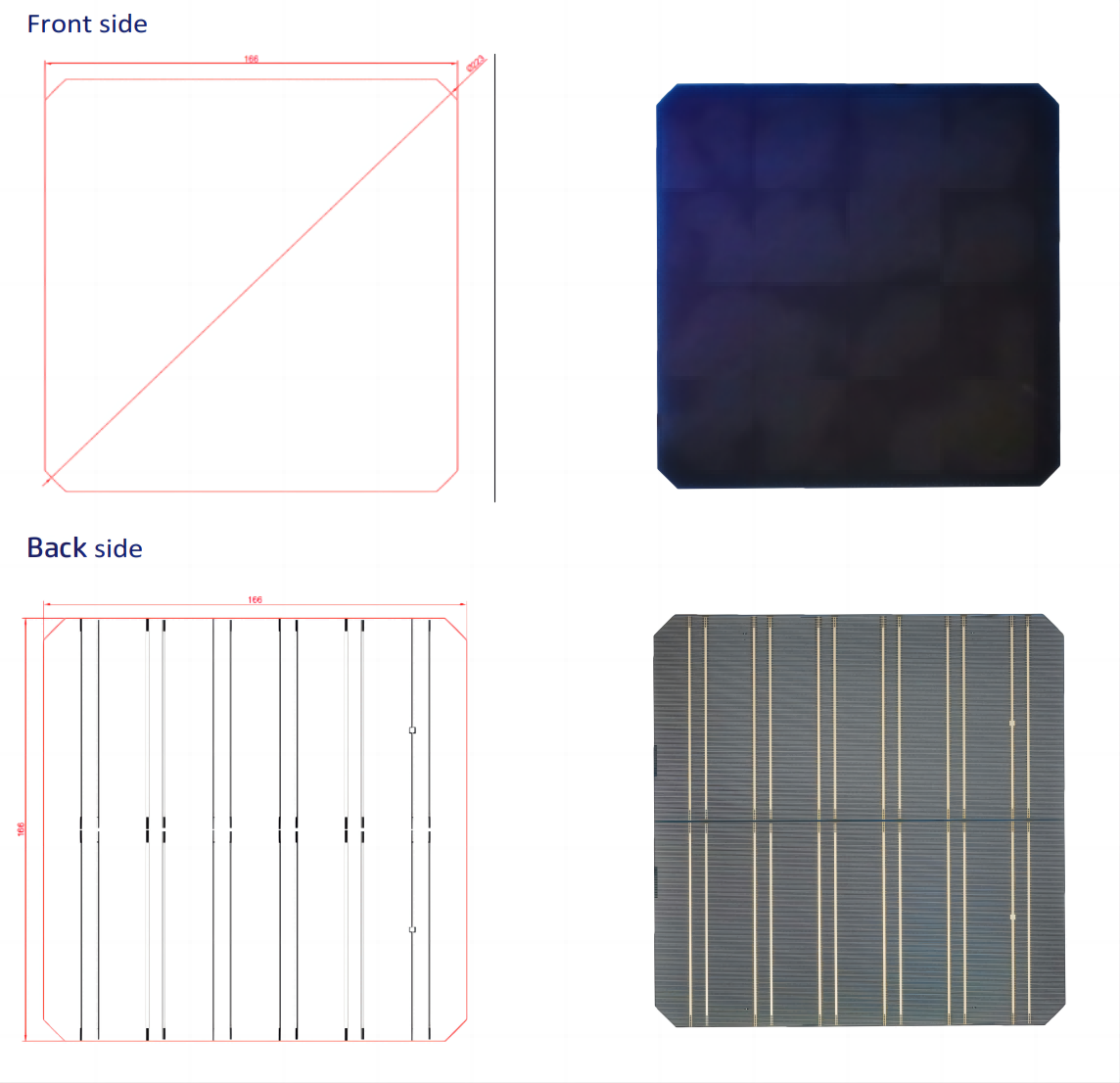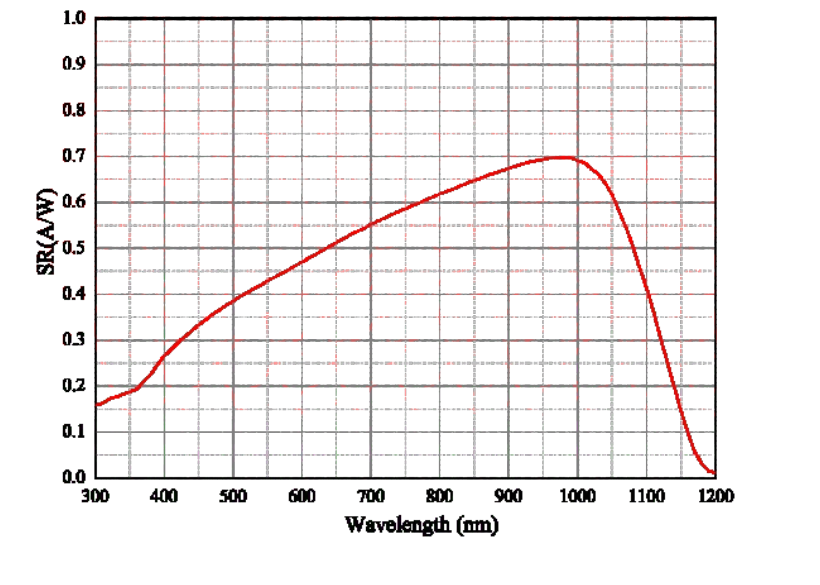Dimensions :
166mmx166mm±0.5mm,Φ 223mm±0.5mmThickness :
160μm± 20μmFront (-) :
front without grid line,blue anti-reflection coating(silicon nitride)Back (+) :
0.8mm bus bars(silver),blue anti-reflection coating(silicon nitride)
Introduction of IBC Technology
IBC solar cell technology refers to a solar cell structure with back-to-back contact, and its positive and negative metal electrodes are arranged in a cross-finger-like manner on the backlit surface of the battery. Due to the high requirements for the low birthrate life, IBC soalr cell generally use N-type silicon wafers as the substrate, and the front surface is N+ front field area FSF, which uses the field passivation effect to reduce the surface minority particle concentration, thereby reducing the surface recombination rate, and at the same time reducing the series resistance and improving the electron transmission capacity; The back surface is a P+ emitter and N++ back field BSF arranged in a cross-finger arrangement formed by diffusion, the emitter can form a p-n junction with the N-type silicon substrate, effectively shunt carriers, and the n+ back surface field area can form a high and low junction with n-type silicon, which enhances the separation ability of carriers, which is the core technology of IBC solar cell. SiO2/SiNx laminated film was used as the passivation film on the front and rear surfaces to inhibit carrier recombination on the back surface of IBC solar cells. The front surface is often plated with an anti-reflective layer to improve power generation efficiency; The metal contact parts are all in the positive and negative electrode contact area on the back, and are also arranged in a cross-finger pattern.
IBC's unique structure also gives it unique advantages: (1) Beautiful appearance. The electrodes in the IBC cell emission area and base area are on the back, and the front side is completely uncovered by grid lines, especially suitable for photovoltaic building-integrated (BIPV) application scenarios and household scenarios with low price sensitivity, and has good commercialization prospects. (2) Single-sided structure with high conversion efficiency. The unobstructed structure on the front of the IBC battery eliminates the loss caused by the shielding of the grid line, realizes the maximum utilization of incident photons, and the short-circuit current can be increased by about 7% compared with conventional solar cells, the positive and negative electrodes are on the back of the battery, there is no need to consider the problem of grid line occlusion, and the ratio of the grid line can be appropriately widened, thereby reducing the series resistance and improving FF; Since the front side does not need to consider the grid line shading, metal contact and other factors, the surface passivation and surface light trapping structure can be optimized to obtain a lower front surface recombination rate and surface reflection, thereby improving Voc and Jsc. The improvement of short-circuit current, FF, and Voc makes the front unobstructed IBC battery have high conversion efficiency; However, the unique structure of the grid line on the back sacrifices the bilaterality of the solar cell and cannot absorb the sunlight reflected through the ground, so it is suitable for applications such as photovoltaic building integration that cannot use the light emitted from the back.
Engineering Drawing (mm )

Light intensity reliability
|
Intensity(W/m²) |
1000 |
900 |
500 |
300 |
200 |
|
Uoc |
1.0 | 0.994 | 0.974 | 0.951 | 0.927 |
|
Isc |
1.0 | 0.900 | 0.500 | 0.300 | 0.200 |
| * Taking the Voc(Isc) tested at 1000W/m² as the standard, test the decrease of Voc (Isc) with the light intensity. | |||||
IV curve Spectral response(SR)


Electrical performance distribution
| Effciency(%) | Pmpp(Wp) | Umpp(V) | Impp(A) | Uoc(V) | Isc(A) | FF(%) |
| 24.3~24.4 | 6.66 | 0.599 | 11.712 | 0.700 | 12.289 | 81.55 |
| 24.2~24.3 | 6.63 | 0.598 | 11.683 | 0.699 | 12.290 | 81.32 |
| 24.1~24.2 | 6.61 | 0.597 | 11.653 | 0.699 | 12.263 | 81.17 |
| 24.0~24.1 | 6.58 | 0.596 | 11.625 | 0.698 | 12.252 | 81.01 |
| 23.9~24.0 | 6.55 | 0.595 | 11.598 | 0.698 | 12.224 | 80.93 |
| 23.8~23.9 | 6.52 | 0.595 | 11.552 | 0.697 | 12.191 | 80.92 |
| 23.7~23.8 | 6.50 | 0.594 | 11.531 | 0.697 | 12.180 | 80.74 |
| 23.6~23.7 | 6.47 | 0.593 | 11.517 | 0.696 | 12.172 | 80.54 |
| 23.5~23.6 | 6.44 | 0.591 | 11.502 | 0.696 | 12.166 | 80.32 |
Temperature coefficients
| Voc.Temp.Coef | -0.268%/K |
| Isc.Temp.Coef | +0.042%/K |
| Pm.Temp.Coef | -0.3%/K |
All data contained in this datasheet is subject to change without notice.